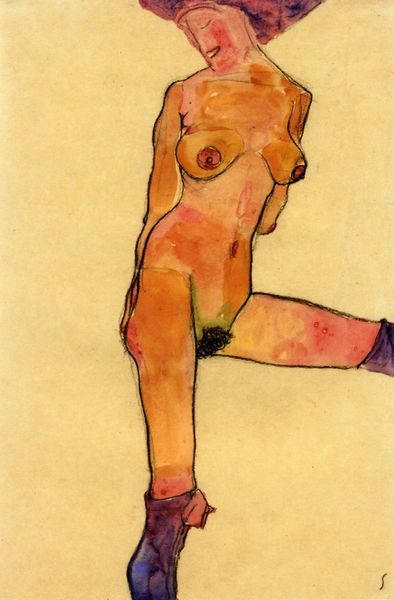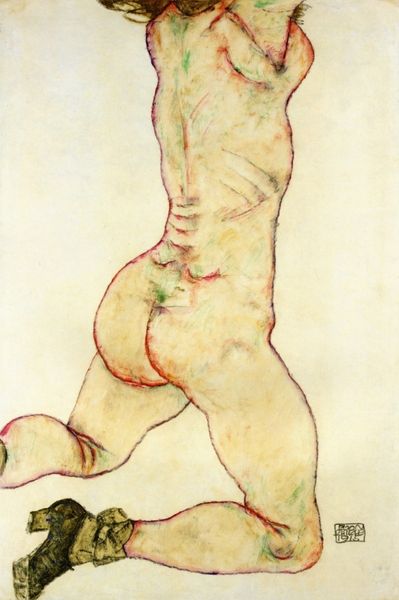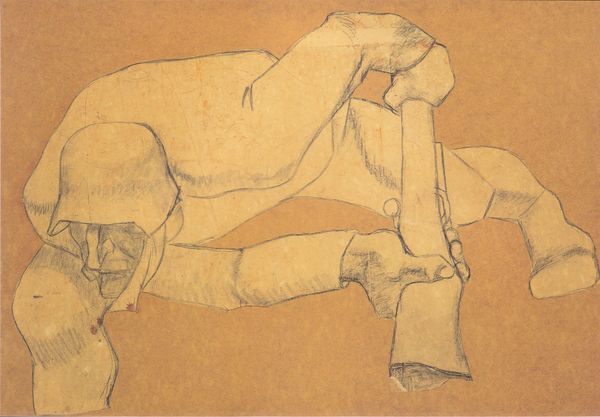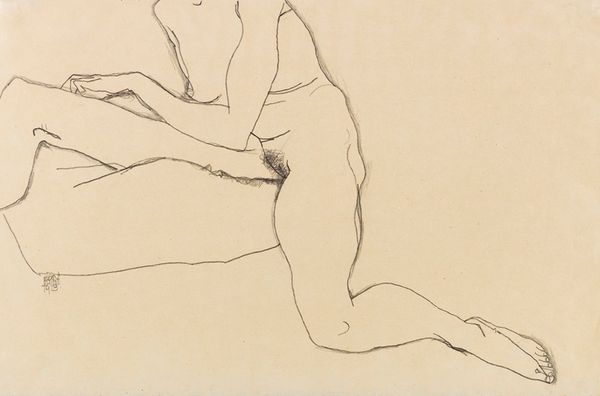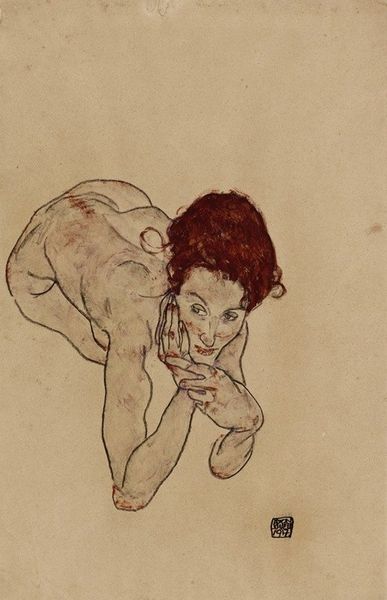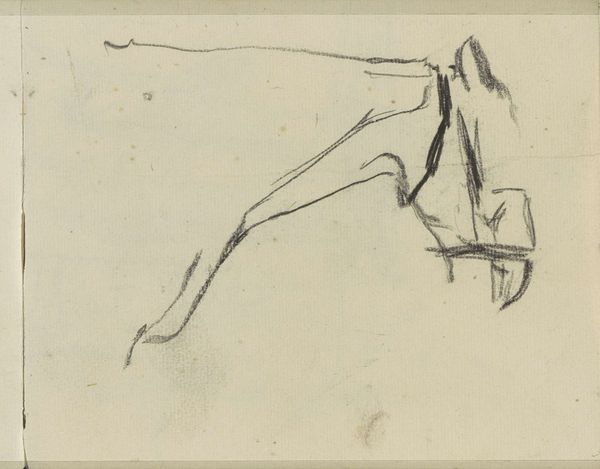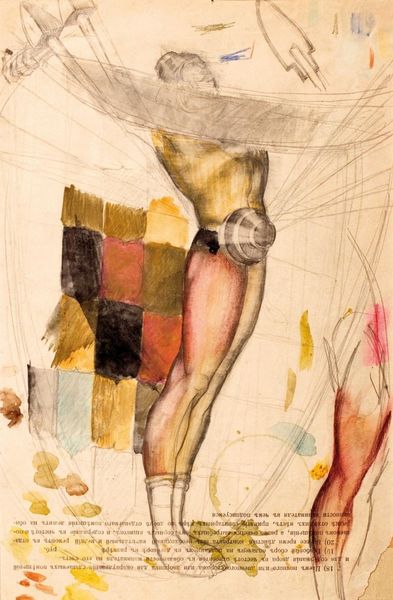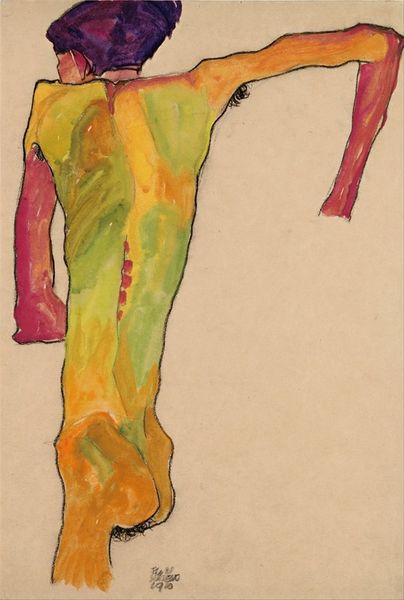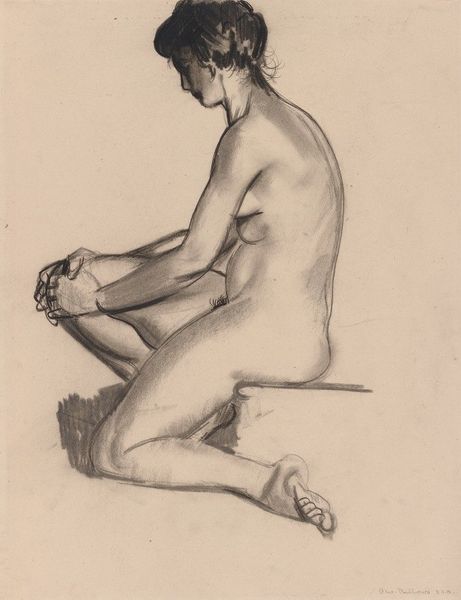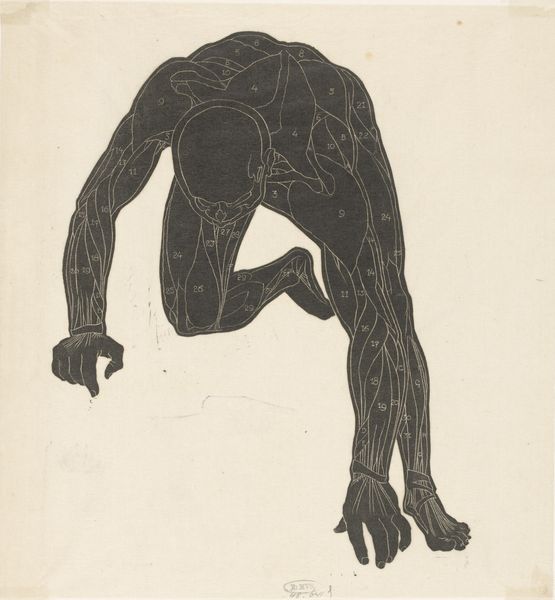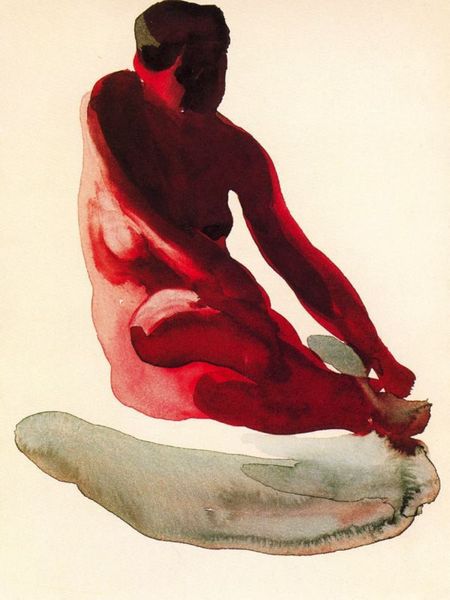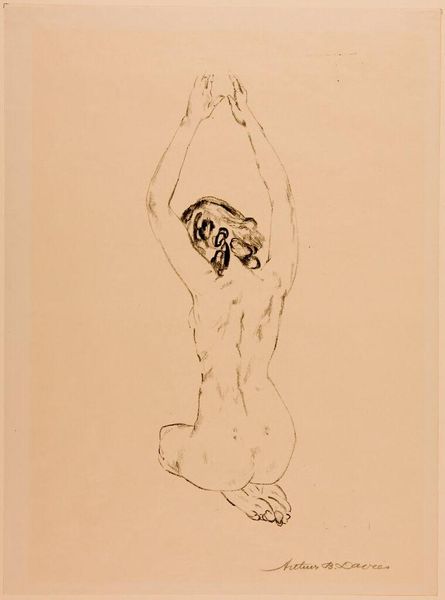
drawing
#
portrait
#
drawing
#
figuration
#
expressionism
#
nude
Copyright: Public Domain: Artvee
Curator: At first glance, I am struck by the vulnerability it conveys. The lack of a face forces the viewer to consider a faceless depiction of humanity reduced to mere flesh, making me think of alienation, perhaps a symptom of early 20th-century anxieties. Editor: Here we have Egon Schiele's "Male Torso, Lower Part," dating from 1910. It is a drawing, one of many figural works on paper from this period of the artist's career. Curator: Those legs and feet appear awkwardly splayed, rendered in thin lines. Their unnatural positions and heightened color around the joints strike a dissonant chord, yet perhaps it is Schiele's intention to portray inner turmoil. The rendering and absence create a lasting symbolic imprint, unsettling the viewers as it depicts the angst and discord between modernity and conventional ideals. Editor: The work undoubtedly reflects the Expressionist movement, a rejection of academic standards to uncover a deeper truth. It should be seen in relation to Schiele's wider practice and as a response to the complex artistic and social developments that shaped Vienna at the beginning of the 20th Century. Curator: What’s intriguing to me is that he leaves the figure without a face, an anonymity that feels pointedly unsettling. The vivid depiction of the flesh and the near absence of context—besides the suggestion of what’s being omitted above the midriff—only magnifies that alienation, making me ask: “How can Schiele present humanity by focusing only on the naked human physique devoid of the person?” Editor: I agree. It is a striking depiction. His style, here, is far from idealized; the emphasis on contorted poses and disjointed forms speaks of the anxiety and psychological intensity characteristic of Expressionism and turn-of-the-century modern art that served as an introspective glimpse into his worldview at the time. Curator: Thinking about it further, what remains poignant is Schiele’s refusal of classical composure in exchange for raw and unsettling displays of humanness in his own distinct way, perhaps indicative of our collective internal uncertainties. Editor: A lasting reminder of how art serves to provoke dialogue on questions of humanity.
Comments
No comments
Be the first to comment and join the conversation on the ultimate creative platform.
